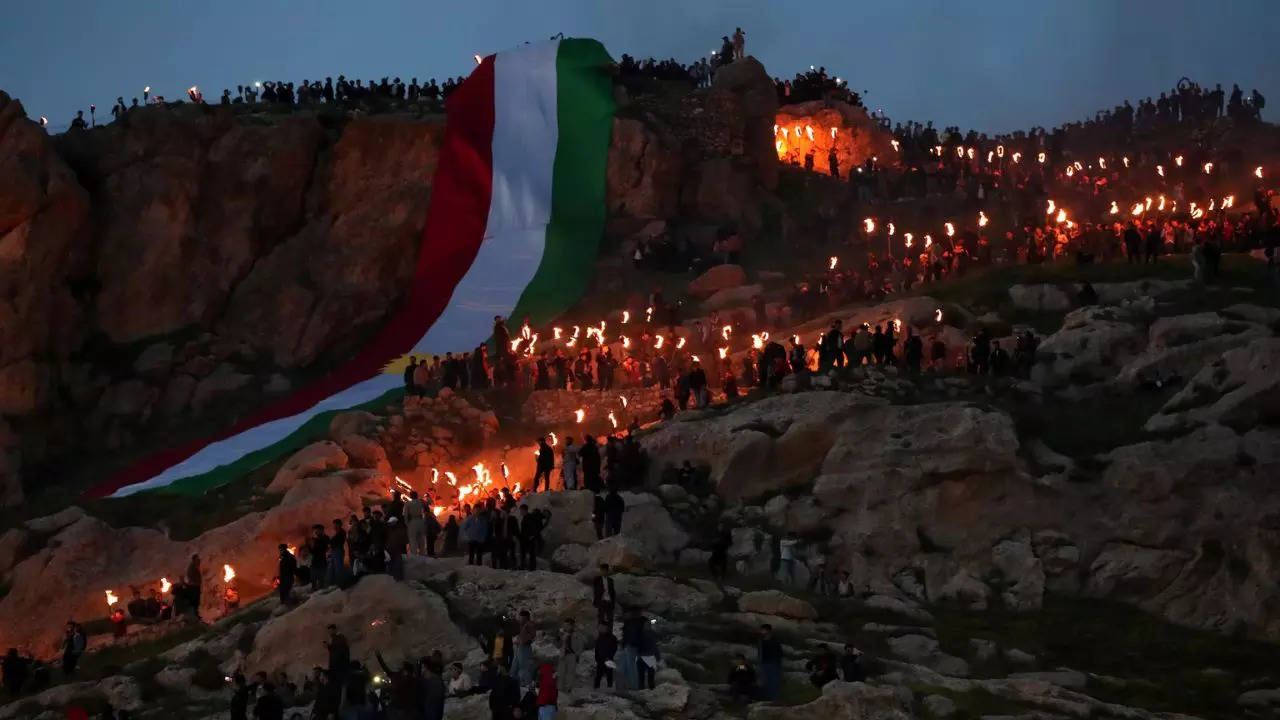NEW DELHI: Nowruz, the 13-day festival, is in full swing and millions worldwide are preparing to take part in the festivities and celebrations rooted in the ancient Persian Empire.
Stretching from Afghanistan to Egypt and the Balkans, Persia’s cultural influence is embraced through this vibrant celebration.
Dating back 3,500 years, Nowruz’s traditions continue to hold significance, stressing the importance of an annual reset, cherishing family bonds, and reconnecting with nature.
Originally a holiday in Zoroastrianism, an ancient monotheistic religion founded by Zoroaster around 500 BCE, Nowruz played a vital role during the Persian Empire reign (roughly 559-331 BCE). Rulers summoned subjects to Persepolis for gift-giving as a show of prosperity, a custom that persists today.
Despite Zoroastrianism giving way to Islam post-Arab conquest in 632 CE, Nowruz evolved into a secular celebration embraced by diverse faiths like Christians, Jews, and Muslims.
Today, countries such as India, Iran, Afghanistan, Azerbaijan, Pakistan, Turkey, Uzbekistan and other countries, along with their diaspora communities worldwide, observe Nowruz.
The festival has also even made its way into Western culture, with Disney featuring Mickey Mouse explaining Nowruz in an animation and American media showcasing Nowruz food stories and recipes. Disco Tehran, a popular dance party, now hosts Nowruz events in cities like Berlin, Paris, and London.
Meaning “new day” in Persian, Nowruz starts at the moment of the spring equinox when the sun passes over the equator on its way north. This year, it kicks off on 20 March at 8.36 in India, 06.36 in Iran and 03. 06 in UK, and on 19 March at 23.06 in US.
Unique customs mark the occasion globally, from Afghanistan’s mewa dessert to Tajikistan and Kyrgyzstan’s tradition of filling vessels with water before the new year strikes.
In Afghanistan, the national sport of buzkashi, akin to polo but using a goat’s body instead of a ball, adds a distinctive touch to the celebrations.
Symbolising rebirth and fresh starts, Nowruz requires thorough preparations leading up to the equinox. Cleaning homes inside out, resolving conflicts with symbolic gifts, sprouting lentils and wheat, and jumping over bonfires to rid negativity are essential steps.
These rituals culminate in a day of family visits, feasting, and the symbolic tossing of sprouts into flowing water to signify a break with the past year.
On the final day of Nowruz, picnicking in the countryside and discarding sprouts into moving water mark a fresh start amidst the changing seasons.
As Nowruz continues to bridge cultural divides and spread across the globe, its message of renewal and unity remains ever relevant. However ,because of climate change and other uncertainties, the traditional way people have celebrated Nowruz for thousands of years is changing.
Stretching from Afghanistan to Egypt and the Balkans, Persia’s cultural influence is embraced through this vibrant celebration.
Dating back 3,500 years, Nowruz’s traditions continue to hold significance, stressing the importance of an annual reset, cherishing family bonds, and reconnecting with nature.
Originally a holiday in Zoroastrianism, an ancient monotheistic religion founded by Zoroaster around 500 BCE, Nowruz played a vital role during the Persian Empire reign (roughly 559-331 BCE). Rulers summoned subjects to Persepolis for gift-giving as a show of prosperity, a custom that persists today.
Despite Zoroastrianism giving way to Islam post-Arab conquest in 632 CE, Nowruz evolved into a secular celebration embraced by diverse faiths like Christians, Jews, and Muslims.
Today, countries such as India, Iran, Afghanistan, Azerbaijan, Pakistan, Turkey, Uzbekistan and other countries, along with their diaspora communities worldwide, observe Nowruz.
The festival has also even made its way into Western culture, with Disney featuring Mickey Mouse explaining Nowruz in an animation and American media showcasing Nowruz food stories and recipes. Disco Tehran, a popular dance party, now hosts Nowruz events in cities like Berlin, Paris, and London.
Meaning “new day” in Persian, Nowruz starts at the moment of the spring equinox when the sun passes over the equator on its way north. This year, it kicks off on 20 March at 8.36 in India, 06.36 in Iran and 03. 06 in UK, and on 19 March at 23.06 in US.
Unique customs mark the occasion globally, from Afghanistan’s mewa dessert to Tajikistan and Kyrgyzstan’s tradition of filling vessels with water before the new year strikes.
In Afghanistan, the national sport of buzkashi, akin to polo but using a goat’s body instead of a ball, adds a distinctive touch to the celebrations.
Symbolising rebirth and fresh starts, Nowruz requires thorough preparations leading up to the equinox. Cleaning homes inside out, resolving conflicts with symbolic gifts, sprouting lentils and wheat, and jumping over bonfires to rid negativity are essential steps.
These rituals culminate in a day of family visits, feasting, and the symbolic tossing of sprouts into flowing water to signify a break with the past year.
On the final day of Nowruz, picnicking in the countryside and discarding sprouts into moving water mark a fresh start amidst the changing seasons.
As Nowruz continues to bridge cultural divides and spread across the globe, its message of renewal and unity remains ever relevant. However ,because of climate change and other uncertainties, the traditional way people have celebrated Nowruz for thousands of years is changing.
